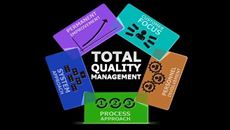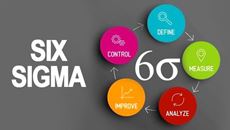- Delivery Method Online
- Professional Certificate
- 24hrs Suggested Study Time
- 3 Months Access
- Tutor Support
- Study On Any Device
- 2763 Students
Supply Chain Management

Master the fundamentals of supply chain management and prepare for internationally recognised certification examinations.
Supply chain management professionals play a key role in capturing customer demands, creating forecasts, developing schedules, ordering and managing inventory, controlling production orders, and maximising customer satisfaction.
This course will help you succeed in the supply chain management field. You will learn which actions to take when confronted by almost any situation. You'll understand how to represent top management's interests on the shop floor, and you'll know how to translate such initiatives as strategic planning, sales and operations planning, and new product introduction into achievable, operational plans.
You'll understand all the necessary elements to fulfill the requirements of a formal supply chain cycle beginning with developing long-range production, sales, and capacity plans and ending with planning, implementing, and controlling daily manufacturing schedules. You'll master the fundamentals of supply chain management, including customer demand forecasting, master production scheduling (MPS), material requirements planning (MRP), capacity planning, and production activity control (PAC).
Courses are delivered to you through expertly executed lessons, online instruction and interaction with like-minded students. Our courses are designed to deliver all of the benefits of studying in a classroom whilst giving you the flexibility to study at a time and place to suit your needs. You can access your classroom 24/7 from any device with an internet connection.
This course has a 3 month duration. You'll complete comprehensive lessons, quizzes and assignments before submitting your final exam at the end of the course to achieve your certificate. Courses must be completed within the 3 month access period.
In this lesson, we'll discuss professional certification and get acquainted with APICS, the professional society for supply change management (SCM) practitioners. You'll find out about the concept of an operating system and the use of a supply chain. You'll also learn about Material Resources Planning (MRPII) and the role that it plays in an organization.
MRPII creates a logical structure for information, activities, and material to flow. While beneficial, MRPII represents only half of what an organization needs to succeed. Today, you'll see the other half of the picture—Sales and Operations Planning (S&OP). It's a dynamic process that can make your company a world-class organization. You'll learn how to successfully use S&OP, identify key focus areas, and appreciate the benefits of following the S&OP cycle.
In this lesson, we'll examine forecasting—defined as a prediction based on scientific observation. We'll explore the history and nature of forecasting, and discuss customer demand. You'll learn how to set forecasting objectives and create a process to develop and update weekly or monthly forecasts.
Today, we'll examine the components of demand: averages, linear trend, seasonality, and cyclical, irregular, and random factors. We'll cover many qualitative forecasting techniques, including the Delphi method, panel consensus, and historical analogy. You'll learn about quantitative forecasting by working on problems involving time series (simple and weighted moving average and exponential smoothing) and associative methods (linear regression and multiple regression analysis). You'll start to get a sense of which forecasting methods to use for which situations.
In this lesson, we'll conclude our discussion of forecasting. You'll find out about macroforecasting and two forecasting techniques that really fit in the quantitative or qualitative categories: focus forecasting and pyramid forecasting. You'll discover how to develop forecasts for new products, and learn how to use techniques to effectively control your forecasts before they get too far off track.
All manufacturing operations have strategies, which are represented by a business plan and a production plan. A sound business plan identifies processing methods (technology and equipment), manufacturing facilities, human resource needs, material requirements, distribution methods, and warehouse locations. A production plan defines how products will be made available so that marketing can satisfy customer demands and the company can make a profit. Today, you'll learn all about manufacturing strategy. We'll look at the elements of the production plan as essential requirements to support the other elements in an MRPII system.
The topic of today's lesson is the master production schedule (MPS). An MPS breaks down the production plan in greater detail. To manage your MPS effectively, you'll need a master scheduler. We're going to look out how the master scheduler converts the production schedule to an MPS, applies a final assembly schedule, and uses available-to-promise (ATP) to satisfy customer orders. You'll learn how critical it is to measure and control your MPS and methods to keep it moving in the right direction.
The process called material requirements planning (MRP) is one of the great inventions of the 20th century. Today, you'll discover how MRP can help your company. You'll learn about the basics—dependent demand, bills of materials, and inventory records—and study the various reports and schedules. You'll also find out how to lot-size MRP orders and what it takes to implement MRP.
To succeed with capacity planning, you must manage the present and the future. You need to balance flexibility (being able to meet new and diverse needs in different ways) with capability (doing what you must do now). In this lesson, you'll learn about the goals and requirements to effectively manage capacity. You'll also discover how to use strategic capacity management, rough-cut capacity planning (RCCP), and capacity requirements planning (CRP) to define, plan, measure, and control output.
dion-header" id="heading11">
<P>In our final lesson, you'll learn some more techniques for protecting your computer, including using resources for free protection from viruses and spyware. You'll learn how to remove programs you no longer want or need. You'll learn how to copy and paste text and create screenshots. And you'll discover some great timesaving tips and shortcuts, as well as resources for helping yourself so you don't have to be so dependent on others. </P>
</H1>
</H1>
</H1>

Curt Simmons
Curt Simmons, M.Ed, MCSE, MCSA, CTT, is a best-selling author, technical trainer, and multi-media expert. Curt has written more than 50 computing and technology books on a variety of topics, including How To Do Everything with Windows Vista, How t... Read more
Read Curt Simmons's ProfileFrequently Asked Questions
What people are saying about our courses
The Learning Environment
From the moment that you enrol in the Windows 8 Fundamentals you will become an integral part of our learning community. You'll find yourself with the freedom to learn at a speed that suits you, on any device, from anywhere in the world. Achieving your career goals no longer has to mean compromising family and work commitments.
Our Values
Learn At Your Own Pace
We believe in personalised learning. That's why we provide all the tools and support you need to succeed at your own pace. With flexible learning, you'll stay motivated and retain more information. Plus, you can balance your studies with work and family commitments to make your dreams a reality.
We Won't Break The Bank
Education should be accessible to anyone who wants to learn. That's why we offer some of the most competitive prices in the industry with payments plans for just $25 per week. Investing in your future is a smart choice and doesn’t have to break the bank.
Industry-Led Courses
There's no better way to learn than from experts with years of experience in your field. That's why each of our 200+ industry-led courses are designed to give you a real-life perspective on your industry. With our expert mentors, you'll learn from people who have a wealth of knowledge and experience, and who are passionate about sharing it with you.
Get The Personal Support You Deserve
At Vibe Learning, we're real people who are dedicated to providing you with personal support every step of the way. Our industry experts are not only professional and knowledgeable but also incredibly passionate about sharing their expertise with you. With their guidance, you'll gain invaluable insights and practical knowledge to help you succeed.
Still looking?
Check out the following courses related to Windows 8 Fundamentals:
Recently viewed products
Get The Personal Support You Deserve
At Vibe Learning, we're real people who are dedicated to providing you with personal support every step of the way. Our industry experts are not only professional and knowledgeable but also incredibly passionate about sharing their expertise with you. With their guidance, you'll gain invaluable insights and practical knowledge to help you succeed.
Still looking?
Check out the following courses related to Supply Chain Management:










